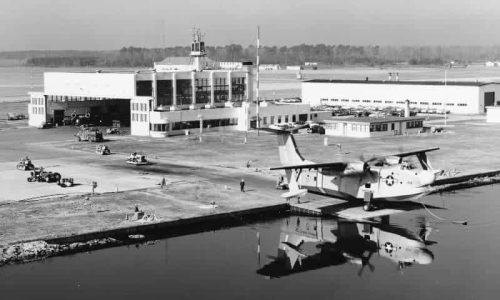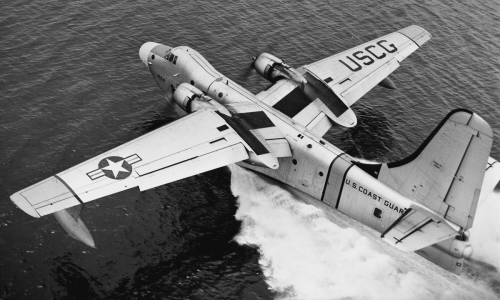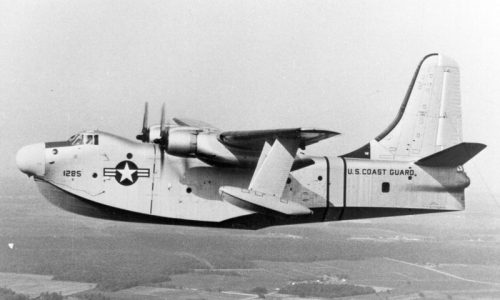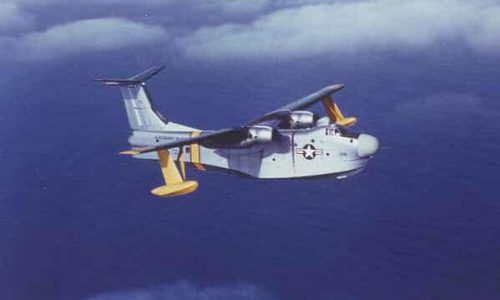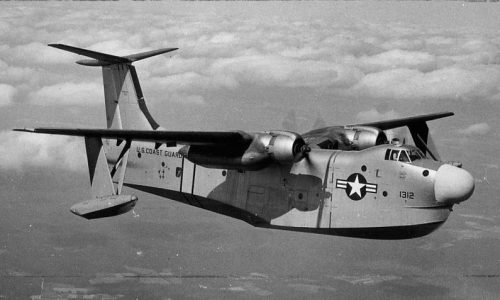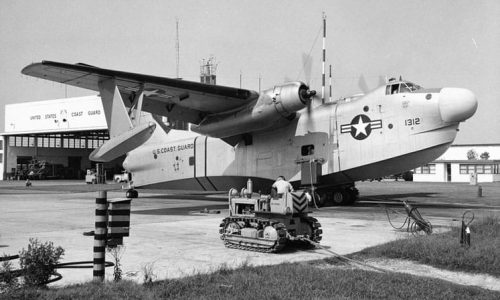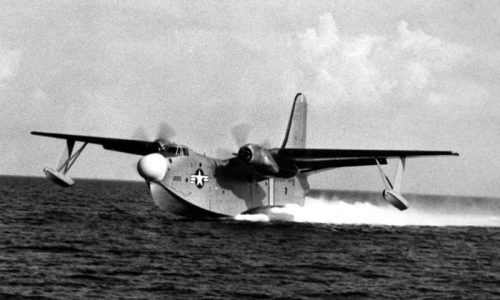The prototype P5M Marlin was based on the PBM-5 Mariner. The P5M had the same wing but an extensively modified fuselage with a hull that extended the full length of the aircraft. It featured a tall single vertical stabilizer instead of the twin tail fins of the PBM-5 and the horizontal stabilizer featured a strong dihedral. The aircraft featured “hydroflaps” operated by the pilot’s rudder pedals, which could be used as water brakes. The P5M was a pure seaplane. The Navy ordered the P5M into production with changes to the prototype. The hull design was revised; the nose turret was replaced with a radome for an AN/APS -80 search radar; the cockpit was raised; the wing floats were mounted on single wide struts.
Martin began a major redesign of the P5M-1 in 1951, producing the P5M-2. The P5M-2 had a distinctive tee tail, with a MAD boom fitted at the junctions of the tailplanes; uprated engines; much greater fuel capacity; the bow chime was lowered to reduce spray and the crew accommodations were improved. This came on line in the fall of 1953.
The Coast Guard acquired seven newly built P5Ms directly from Martin Aircraft in 1954. They were designated P5M-1G. These aircraft were used for search and rescue purposes and did not have ASW gear and defensive/offensive armament. In 1956 four P5M-2Gs, equipped for SAR missions, were purchased by the Coast Guard. Both the P5M-1Gs and P5M2Gs were transferred to the Navy in 1961 due to high maintenance and operating costs.
The P5M Marlin was the last flying boat in the Coast Guard’s inventory.

